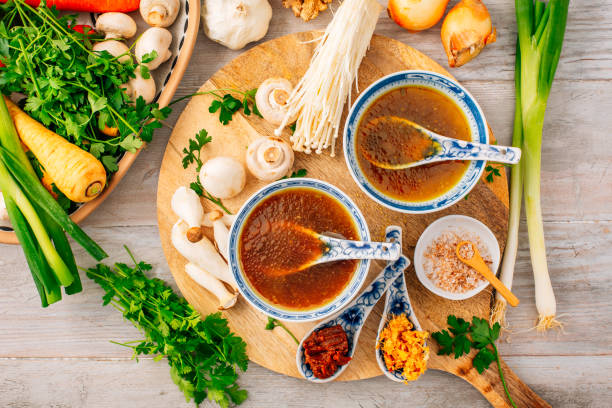Savory Seaweed: The Ocean's Umami Powerhouse
Dive into the depths of culinary delight with seaweed, the unsung hero of the sea. This nutrient-packed, versatile ingredient is making waves in kitchens worldwide, offering a unique umami flavor and a host of health benefits. From traditional Asian cuisines to modern fusion dishes, seaweed is revolutionizing the way we think about ocean-to-table dining.

A Nutritional Powerhouse from the Sea
Seaweed is not just a flavorful addition to your meals; it’s also a nutritional powerhouse. Packed with essential vitamins and minerals, seaweed is an excellent source of iodine, which is crucial for thyroid function. It’s also rich in antioxidants, fiber, and omega-3 fatty acids. Many varieties of seaweed contain more calcium than milk and more iron than spinach, making it an ideal food for vegetarians and vegans looking to boost their nutrient intake.
Culinary Versatility: From Snacks to Gourmet Dishes
The versatility of seaweed in the kitchen is truly remarkable. It can be used as a wrap for sushi, crumbled as a seasoning, or added to soups and stews for extra flavor. Crispy seaweed snacks have become increasingly popular, offering a healthier alternative to traditional potato chips. In fine dining, chefs are incorporating seaweed into innovative dishes, using it to create visually stunning plates that showcase the beauty of ocean-inspired cuisine.
Sustainability: A Green Choice for the Blue Planet
As concerns about overfishing and marine conservation grow, seaweed emerges as a sustainable food source. Unlike land-based crops, seaweed doesn’t require freshwater, fertilizers, or pesticides to grow. It also absorbs carbon dioxide and releases oxygen, potentially helping to mitigate climate change. By choosing seaweed, consumers can enjoy a delicious ingredient while supporting environmentally friendly food production practices.
Global Seaweed Traditions: A Cultural Exploration
While seaweed is often associated with East Asian cuisines, it has been a part of traditional diets in many coastal regions worldwide. In Ireland, dulse has been harvested for centuries and is still enjoyed as a snack or cooked into dishes. Welsh laverbread, made from seaweed, is a traditional delicacy. Exploring these diverse cultural uses of seaweed can open up new culinary horizons and inspire creative cooking experiments.
Seaweed Sensations: Tips for Culinary Exploration
- Start simple: Try sprinkling dried seaweed flakes on popcorn or roasted vegetables for an umami boost
- Experiment with seaweed salads: Mix different types of seaweed with sesame oil, rice vinegar, and sesame seeds
- Use nori sheets as a wrap alternative for sandwiches or spring rolls
- Add kombu to your pot when cooking beans to enhance flavor and improve digestibility
- Try seaweed butter: Blend dried seaweed into softened butter for a unique spread
- Explore seaweed-infused beverages, like seaweed-seasoned cocktails or teas
As we continue to seek out new flavors and sustainable food options, seaweed stands out as a true culinary treasure. Its rich umami taste, impressive nutritional profile, and eco-friendly credentials make it an ingredient worth exploring. Whether you’re a seasoned chef or a curious home cook, incorporating seaweed into your culinary repertoire can open up a world of delicious possibilities. Embrace the ocean’s bounty and let seaweed transform your meals into wave-making culinary adventures.





